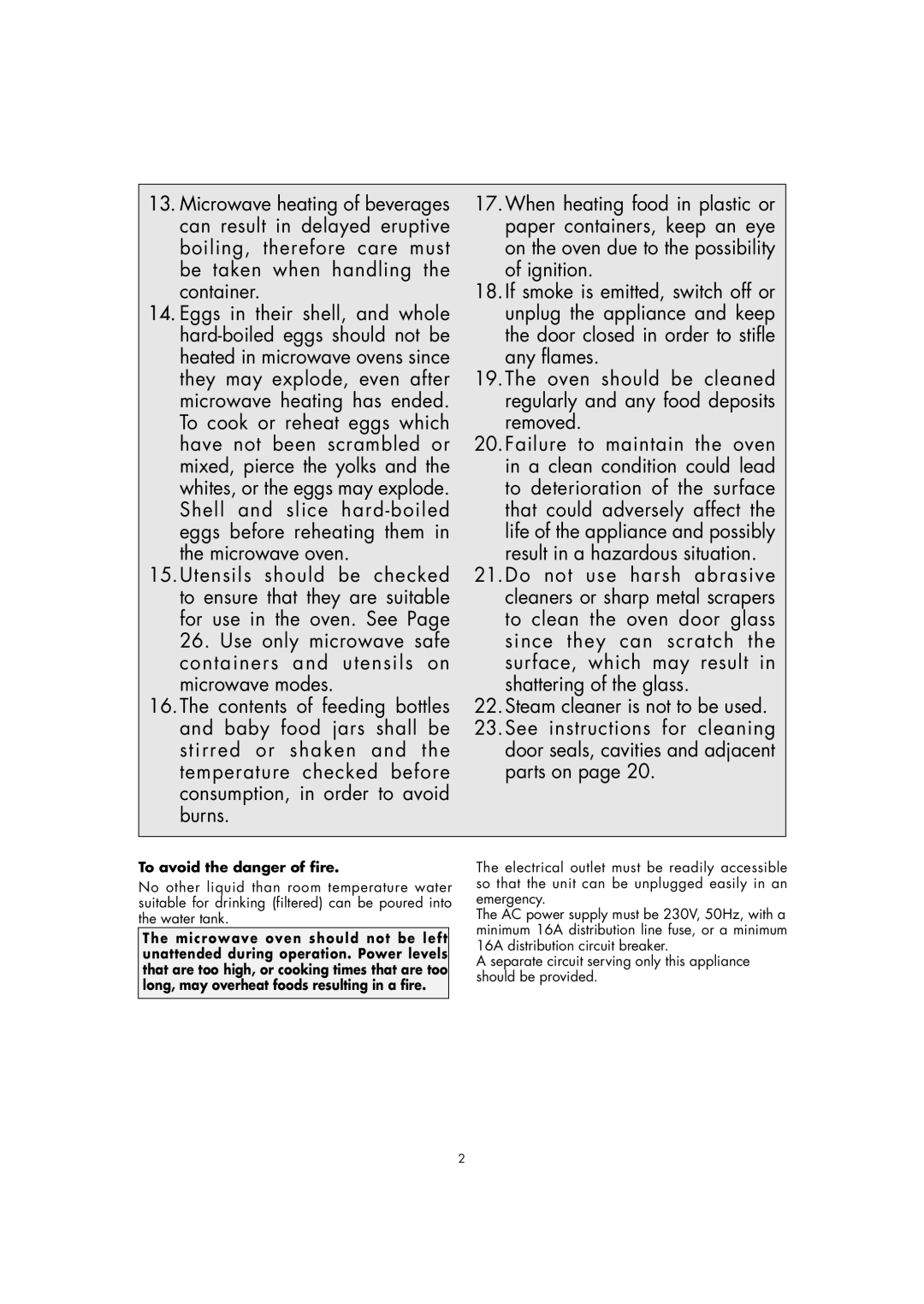
13.Microwave heating of beverages can result in delayed eruptive boiling, therefore care must be taken when handling the container.
14.Eggs in their shell, and whole
15.Utensils should be checked to ensure that they are suitable for use in the oven. See Page 26. Use only microwave safe containers and utensils on microwave modes.
16.The contents of feeding bottles and baby food jars shall be stirred or shaken and the temperature checked before consumption, in order to avoid burns.
17.When heating food in plastic or paper containers, keep an eye on the oven due to the possibility of ignition.
18.If smoke is emitted, switch off or unplug the appliance and keep the door closed in order to stifle any flames.
19.The oven should be cleaned regularly and any food deposits removed.
20.Failure to maintain the oven in a clean condition could lead to deterioration of the surface that could adversely affect the life of the appliance and possibly result in a hazardous situation.
21.Do not use harsh abrasive cleaners or sharp metal scrapers to clean the oven door glass since they can scratch the surface, which may result in shattering of the glass.
22.Steam cleaner is not to be used.
23.See instructions for cleaning door seals, cavities and adjacent parts on page 20.
To avoid the danger of fire.
No other liquid than room temperature water suitable for drinking (filtered) can be poured into the water tank.
The microwave oven should not be left unattended during operation. Power levels that are too high, or cooking times that are too long, may overheat foods resulting in a fire.
The electrical outlet must be readily accessible so that the unit can be unplugged easily in an emergency.
The AC power supply must be 230V, 50Hz, with a minimum 16A distribution line fuse, or a minimum 16A distribution circuit breaker.
A separate circuit serving only this appliance should be provided.
2
